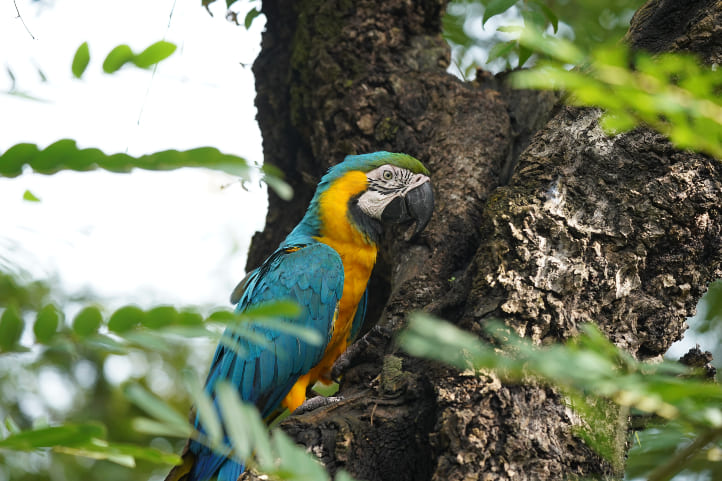Dear reader,
I would also like to recommend our Colombia travel guide, which provides a perfect overview of the tourist attractions in Colombia. Enjoy reading it!
Exploring nature through hiking is a unique way to get to know the biodiversity of a place. It is common to find wild animals at every step. And, knowing how to interact with them is vital to have an enriching and mishap-free experience.
So, in this blog, I will tell you about the common fauna in the hiking routes through the Colombian regions.
Content
ToggleWhat are Colombian regions?
The Colombian departments are mainly divided into 6 geographic regions:
- Andean Region: Antioquia, Boyacá, Caldas, Cundinamarca, part of Cauca, Huila, Quindío, Risaralda, Santander, Tolima and part of Valle del Cauca.
- Amazon region: Amazonas, Caquetá, Putumayo, Guainía, Guaviare and Vaupés.
- Caribbean Region: La Guajira, Magdalena, Bolívar, Cesar, Atlántico, Córdoba and Sucre.
- Insular Region: Archipelago of San Andres, Providencia and Santa Catalina, Gorgona Island and Malpelo.
- Pacific Region: Cauca, Chocó, part of Valle del Cauca and Nariño.
- Orinoco Region: Casanare, Meta, Vichada and Arauca.
These regions group areas of the country according to their geographical, cultural, economic, and climatic characteristics. Therefore, they help to better understand the diversity of the Colombian territory. Among the aspects that stand out in these regions is their diverse biodiversity.
Biodiversity in Colombia
Colombia boasts a wide variety of ecosystems, around 98 in total, and natural habitats that make it one of the most biodiverse countries in the world. It ranks fifth among the 17 countries with the highest diversity on the planet, also known as megadiverse countries.
It is home to over 54,871 recorded species, with a notable number of bird species. Nearly 2,000 species of birds inhabit Colombia, accounting for 20% of the global bird population. Additionally, it is the second country with the highest number of butterflies, with over 3,274 species of this invertebrate.
An interesting fact is that, according to the Humboldt Institute, Colombia is rich in endemic species, meaning types of animals that do not inhabit any other part of the world. For example: the Colombian spider monkey, the ornate titi monkey, the emerald hummingbird of Chiribiquete, and the golden poison frog.
As we can see, the fauna in Colombia is impressive. Therefore, before engaging in outdoor activities such as hiking, it is essential to understand it for the following reasons:
- To ensure your personal safety.
- To conserve these animals and their ecosystems.
- To plan routes to observe animals or, conversely, to avoid disturbing them.
Common animals on hiking trails in the regions of Colombia
Animal species are indeed abundant in this country. However, in crowded places like a tourist trail, animals tend to hide, making it difficult to spot some species. Nevertheless, I’ll tell you about the endemic fauna and the ones you might actually see while hiking.
Birds stand out in this regard. That’s why birdwatching is a common activity while hiking.
Fauna on Andean Trails, Colombia
The Andean region covers the center of the country and is crossed by the Western, Central, and Eastern mountain ranges. Important cities like Bogotá, Medellín, Cali, and Manizales are located here.
It’s characterized by numerous water sources, mountainous topography, and various ecosystems such as savannas, moorlands, deserts, Andean forests, and mangroves. This makes it one of the most popular hiking destinations in Colombia.
Common Animals on Andean Hiking Trails, Colombia
- Paramo eagle
- Squirrels
- Giant hummingbird
- Green hummingbird
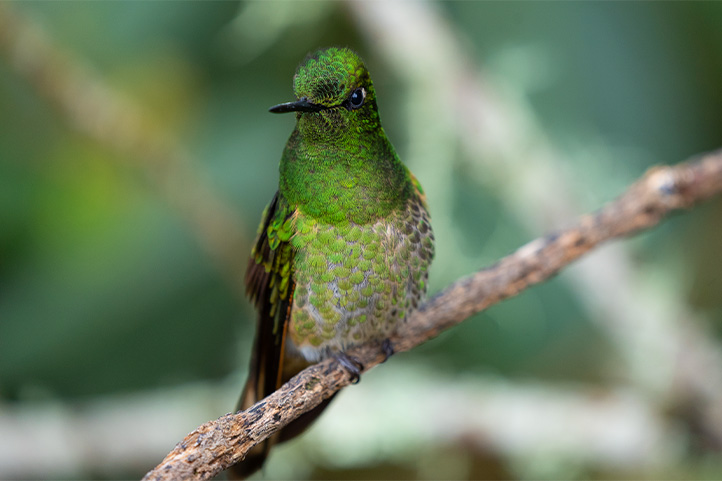
- Wild rabbits
- Snakes
- Sparrowhawk
- Rufous-collared sparrow
- Yellow parrots
- Blue and monarch butterfly
- Blackbirds
- Colombian monkeys (bird)
- Black-headed saltator (bird)
Highlighted Animals in the Andean Region, Colombia
- Andean condors
Conservation status: critically endangered.
Habitat: Andean forests and moorlands.
It’s one of the largest birds in the world, with adults weighing between 10 to 15 kg (22 to 33 pounds) and wingspans reaching up to 3 meters (9 feet). Renowned for its significant role in the ecosystem, this bird is a crucial scavenger, keeping ecosystems clean and balanced. Moreover, it serves as a national symbol.
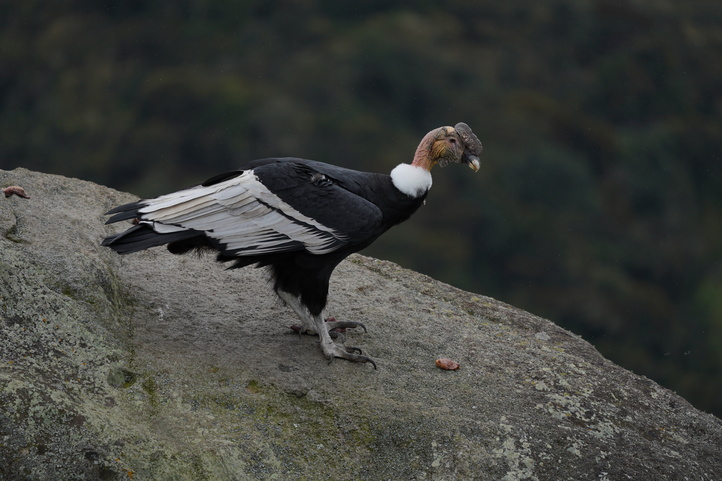
- Spectacled bear
Habitat: Andean forests and moorlands
Conservation status: critically endangered.
It’s the only species of bears inhabiting South America, measuring between 1 to 3 meters (3 to 9 feet) and weighing over 100 kg (more than 220 pounds). Compared to other species, like the brown bear, it’s one of the smallest bear types.
It plays a crucial role in its ecosystem, earning the title “The Guardian of the Páramos and Water.” This bear aids in seed dispersal and regulates small animal populations. Additionally, as a scavenger, it contributes to corpse decomposition.
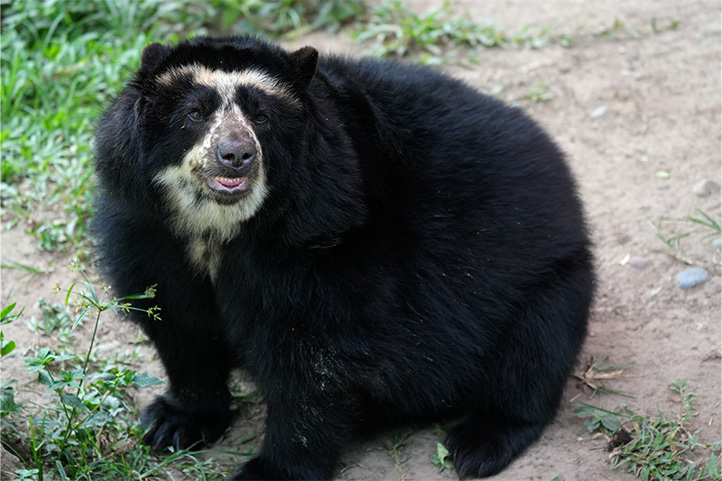
Dangerous Animals in the Andean Region, Colombia
Here are the species considered potentially dangerous in this region:
- Scorpions: Arachnids that use their sting to inject venom; most are poisonous. However, they’re not always lethal and mainly pose risks to small children.
- Banana Spiders: Found on banana plants, they have a lethal bite, being one of the world’s most venomous spiders.
- Mosquitoes: Some can transmit diseases like Dengue or Chikungunya.
Fauna on Trails in the Amazon Region, Colombia
The Amazon region, located in southern Colombia, encompasses part of the Amazon rainforest characterized by dense vegetation, mighty rivers, and a tropical, rainy climate. Cities like Leticia and Puerto Nariño are renowned for offering unique hiking opportunities in tropical jungles and mangroves along the Amazon River.
Common Animals on Hikes in the Amazon Region, Colombia
- Harpy Eagles
- Ospreys
- Topaz Hummingbirds
- Guans
- Macaws
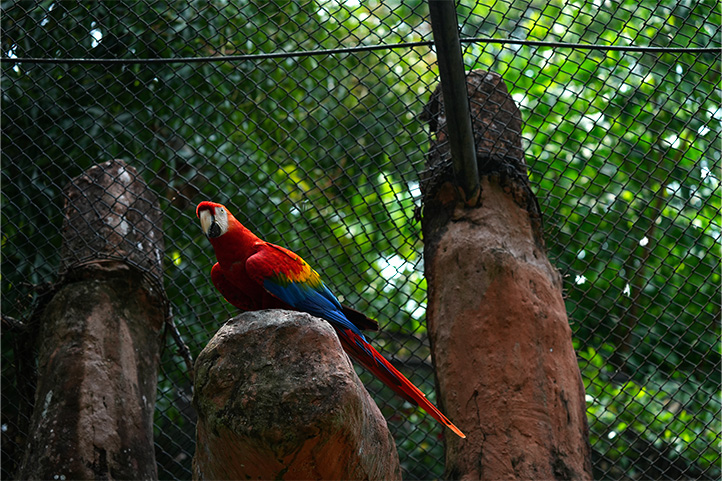
- Butterflies
- Titi Monkeys
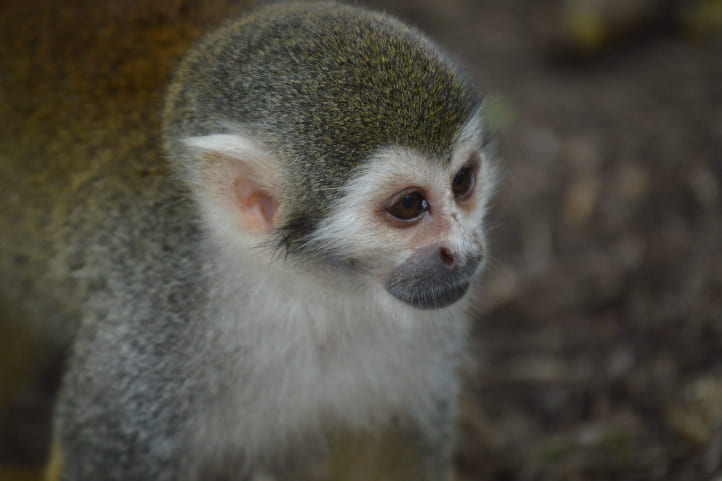
- Sloths
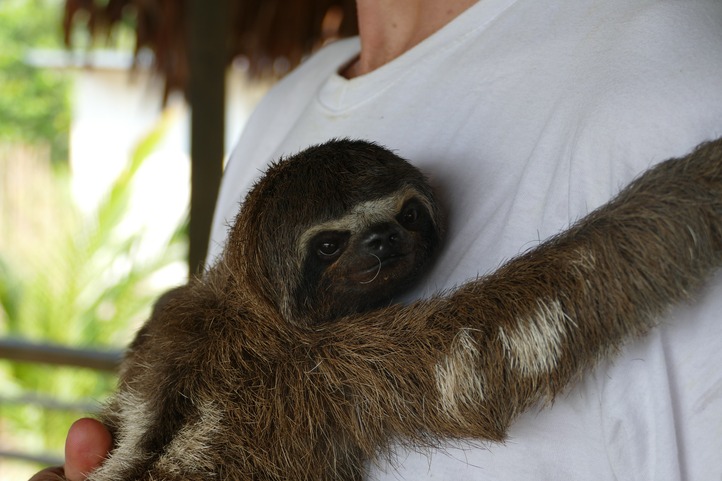
- Chiribiquete (bird)
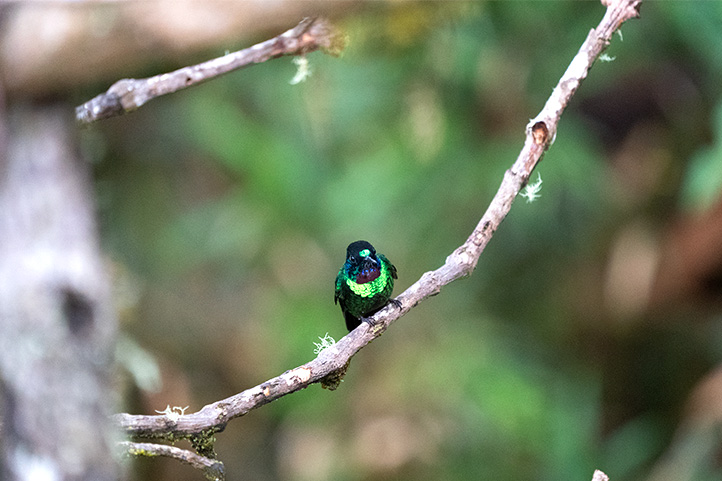
- Pajuiles (bird)
- Tapirs
- Toucans
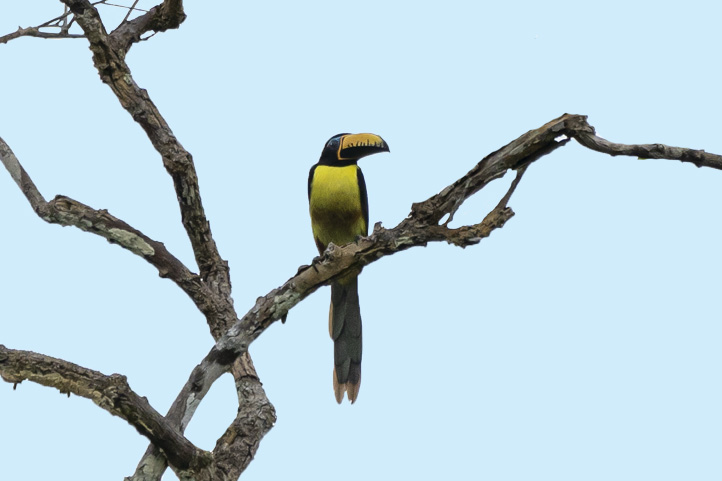
Highlighted Animals in the Amazon Region, Colombia
- Green Anacondas
Habitat: tropical jungle.
Conservation status: vulnerable.
Green anacondas are famous for their impressive size, with adults measuring from 4 to 6 meters (13 to 19 feet) long. They’re essential in their habitat, controlling the population of small animals and recycling nutrients with their waste.
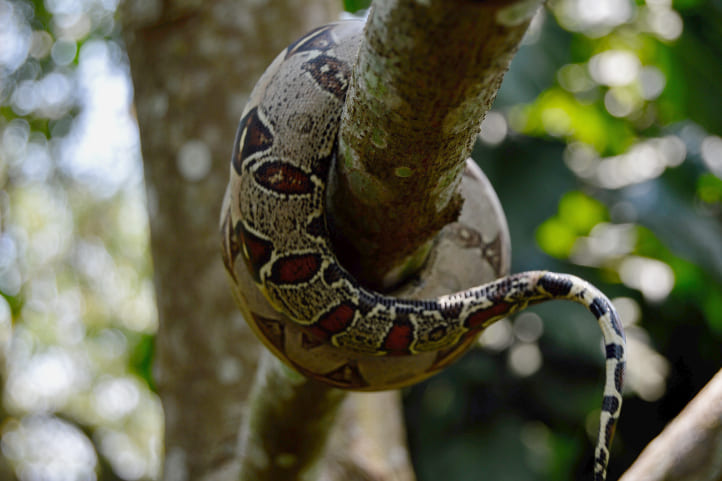
- Jaguars
Habitat: tropical rainforest.
Conservation status: vulnerable.
The jaguar is the largest feline in America, with adult jaguars usually measuring over 2 meters (6 feet) in length from nose tip to tail base. Found in the Colombian Amazon jungle, it’s a key predator in the region’s food chain.

Dangerous Animals in the Amazon Region, Colombia
Here are the species considered potentially dangerous in this region:
- Mosquitoes: as previously described.
- Rattlesnakes: venomous and highly aggressive. Though aside from painful symptoms, their bite is usually not fatal to humans.
- Jararacá Snakes: one of the most venomous snakes in the world; their bite affects not only the blood but also tissues.
- Pink Tarantulas: While their fangs can inject venom, it’s generally not dangerous to humans. However, their bite is very painful.
- Crocodiles: highly territorial, they might try to chase and bite when feeling threatened. Their bite is extremely strong.
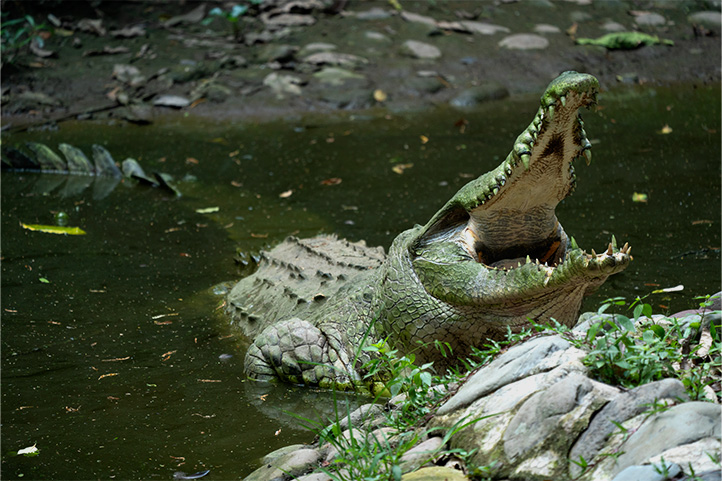
Fauna on Trails in the Caribbean Region, Colombia
The Caribbean Region, located on Colombia’s northern coast along the Caribbean Sea, is known for its warm climate, beaches, and vibrant Caribbean culture. Its most famous cities are Santa Marta, Barranquilla, and Cartagena.
In the Caribbean, there are coastal routes for hiking in mangrove areas, beaches, and tropical jungles.
Common Animals on Hikes in the Caribbean Region, Colombia
- Armadillos
- Caimans
- Cattle egrets
- White herons
- Crane Sparrowhawks
- Common Gull
- Green iguana
- Parrots
- Howler monkeys
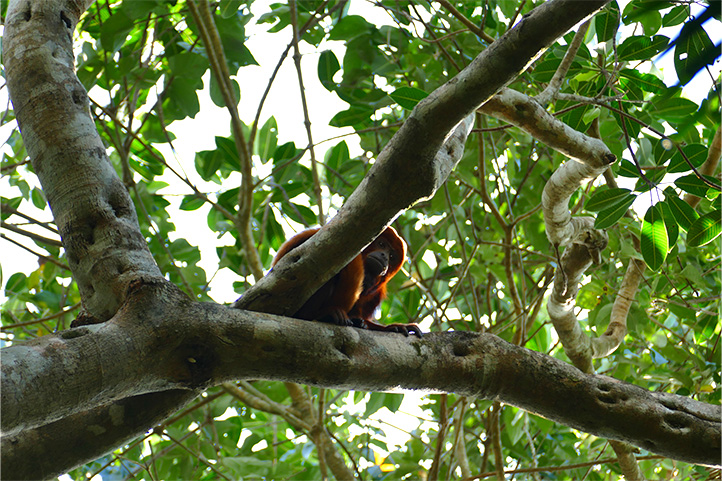
- Nocturnal monkeys
- Anteaters
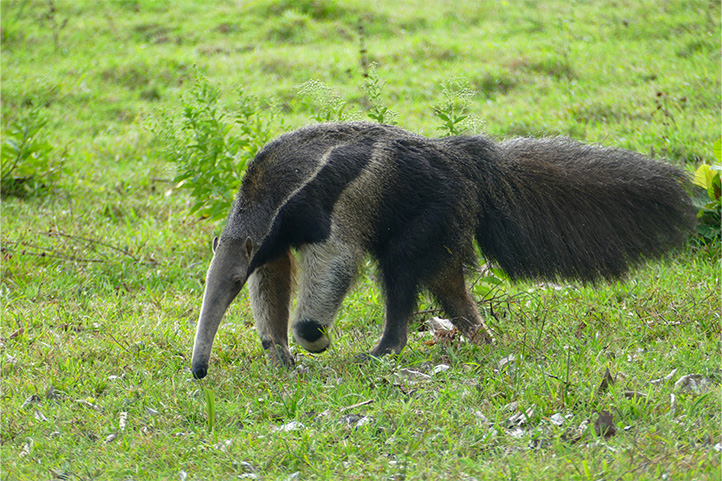
- Sloth bears

- Common bluebirds (bird)
- Common kestrels (bird)
- Black-faced Hermits (bird)
- Eurasian Night Hermits (bird)
- Kingfishers (bird)
- Blue-billed Curassow (bird)
- Flycatchers (bird)
- Blue-winged Curassows (bird)
Highlighted Animals in the Caribbean Region, Colombia
- Titi monkeys
Habitat: Tropical forests.
Conservation Status: Vulnerable, with some variants in danger of extinction.
Titi monkeys are small primates known for their diminutive size and colorful fur. They play a crucial role in seed dispersal and contribute to the Caribbean ecosystem’s balance.
Furthermore, curious about gauging a forest’s health? If you spot titi monkeys, it’s a sign that the conditions of the area are optimal.

- Ocelots
Habitat: Tropical forests and jungles.
Conservation Status: Vulnerable.
These are small felines, measuring about 1 meter (3 feet). They are natural predators that help control rodent populations and other small animals.
- Yellow-footed tortoise
Habitat: Forests and savannas.
Conservation Status: Vulnerable.
These are land turtle species characterized by their prominent shell and short legs. They can grow up to 30 centimeters in size. These turtles transport nutrients across the environments they inhabit and are part of the diet of carnivorous animals.
Dangerous Animals in the Caribbean Region, Colombia
Here are the species considered potentially dangerous in this region:
- Needle caimans: They are very territorial and aggressive animals. Their bite is strong, and their teeth are sharp.
- Coral snakes: Don’t let their attractive colors deceive you; although not aggressive, their bite contains venom that affects the victim’s nervous system.
Fauna in the Trails of the Insular Region, Colombia
This region encompasses the islands of San Andrés, Providencia, and Santa Catalina in the Caribbean Sea. Likewise, in the Pacific Ocean, the islands of Gorgona and Malpelo. The Caribbean islands are located northwest of the Colombian mainland. These islands are known for their white sandy beaches, crystal-clear waters, ideal for hiking, and tropical climate. This sets them apart from the Pacific islands, which usually focus more on maritime exploration for tourism.
Common Animals in Hiking Trails in the Insular Region
- Land crabs
- Frigates
- Common seagulls
- Swallows
- Iguanas
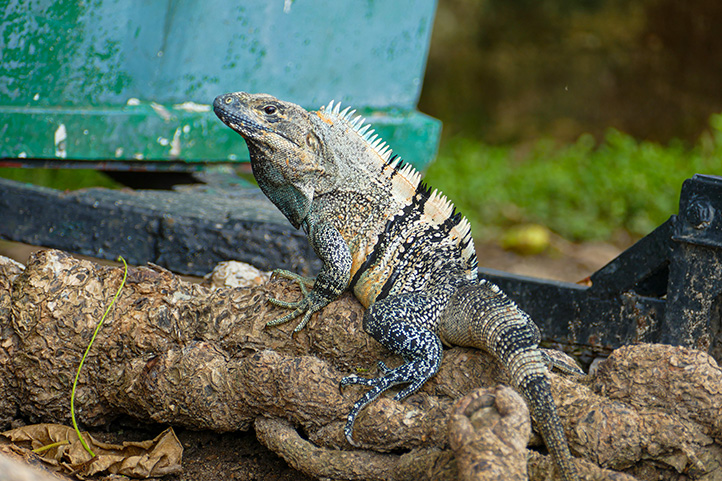
- Plovers (bird)
- Pelicans
- Spiders
- White-faced monkeys
- Honeycreepers (bird)
- Three-toed sloths
- Bees
- Turtles
- Island iguanas
- White-crowned pigeons
- Common mockingbirds (bird)
- Geckos
- Black-throated hummingbirds
- Yellow warblers (bird)
- Black iguanas
Highlighted Animals in the Insular Region, Colombia
- Common crabs
Habitat: Mangroves, beaches, and riverbanks.
Conservation Status: Vulnerable, with some types of this species in critical condition.
These crustaceans inhabit various aquatic habitats in this region and contribute to the decomposition of organic matter. They are also widely used in local cuisine.
- Green iguanas
Habitat: Tropical forests and jungles.
Conservation Status: Near threatened.
The green iguana is a large reptile; adults can measure up to 40 cm (15 inches). They are known for their distinctive appearance, with bright green coloration, a dorsal crest, and a long tail. These animals play a role in plant germination and control the insect population in the ecosystem.
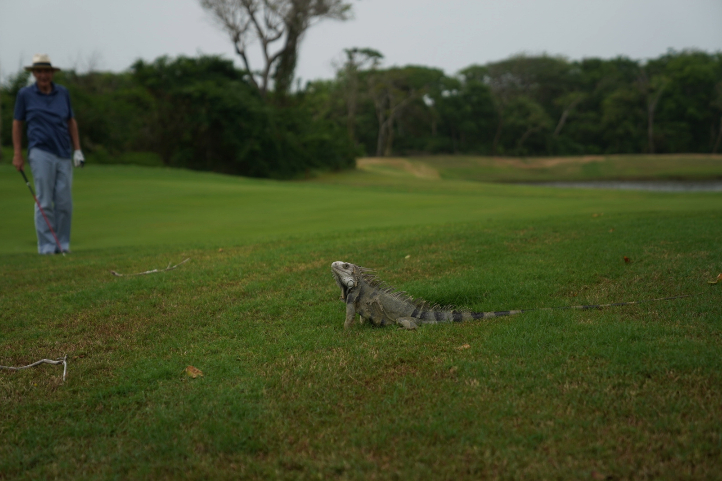
Dangerous Animals in the Insular Region, Colombia
- Scorpions: These arachnids, most of which are venomous, use their sting to inject venom. However, they’re not always lethal, though they can pose risks, especially to young children.
- Spectacled caiman: When feeling threatened, they may attempt to bite, and their bite is quite strong. It’s best to keep a safe distance from them.
Fauna on the Trails of the Pacific Region, Colombia
The Pacific Region, situated on Colombia’s western coast, is renowned for its warm, rainy climate and rich Afro-Colombian culture. Its main cities include Buenaventura, Tumaco, and Quibdó.
Hiking here allows you to explore its tropical jungles and rivers, as well as enjoy marine life along the coastlines.
The Pacific region is part of the Chocó biogeographic zone, an immense area stretching from the Darién province in Panama, across the Gulf of Urabá in the Colombian Caribbean, to parts of Ecuador. The Chocó biogeographic zone boasts some of the world’s greatest biodiversity riches.
Common Animals in Hiking Trails in the Pacific Region, Colombia
Here are some of the animals you might encounter while trekking through its jungles:
- Crocodiles
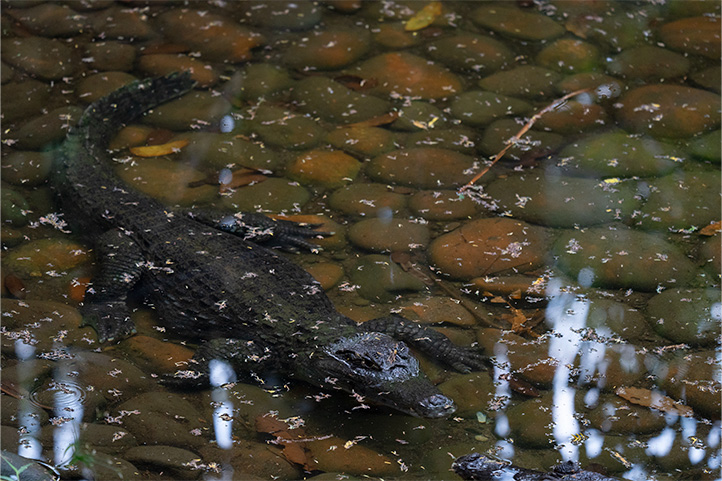
- Crabs
- Hummingbirds, known in this region as Kiden or Quindes
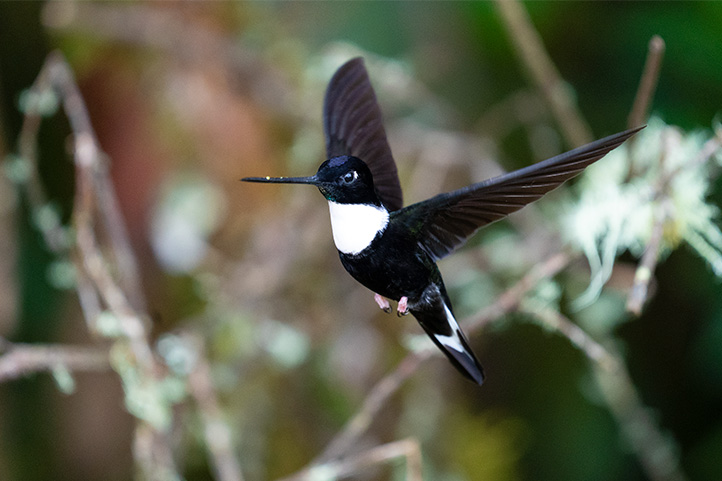
- Seagulls
- Iguanas
- Wild boars
- Malpelo lizards
- Spider monkeys
- Woodpeckers (bird)
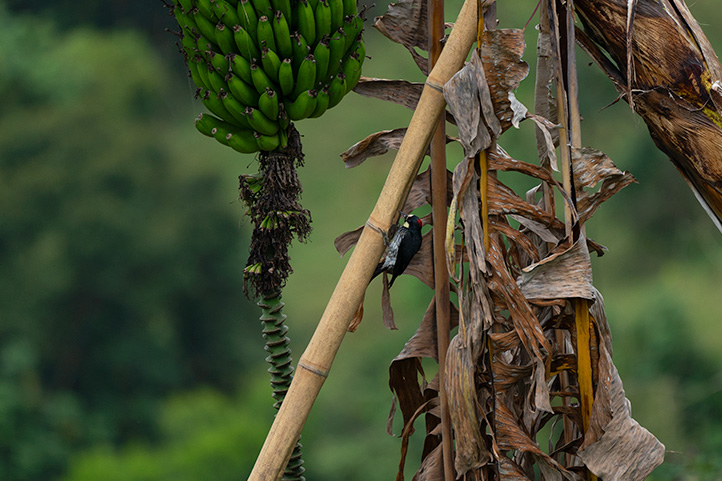
- Common bluebirds (bird)
- Crowned booby (bird)
- Plovers (bird)
- Toucans
Highlighted Animals in the Pacific Region, Colombia
- Jaguars: as previously described.
- Olive Ridley Turtles
Habitat: Coastal beaches.
Conservation Status: Vulnerable.
The Olive Ridley Turtle is a medium-sized marine turtle with a heart-shaped shell. Its olive-green color is quite characteristic. They nest in this area of Colombia and contribute to nutrient transportation, enriching the ecosystem.
- Emerald Hummingbirds
Habitat: Jungles, forests, and gardens.
Conservation Status: minor concern.
Emerald hummingbirds are small birds famous for their iridescent green plumage. By feeding on flower nectar, they pollinate various plant species. They are among the most important pollinators in Colombia.
- Howler Monkeys
Habitat: Jungles and forests.
Conservation Status: Least Concern.
Howler monkeys are primates with a developed throat that enables them to produce distinctive, howling-like sounds. They are vital for seed dispersal and contribute to the health of forest ecosystems.

Dangerous Animals in the Pacific Region, Colombia
Here are the species considered potentially dangerous in this region:
- Brown recluse spiders: The bite of this arachnid is rarely lethal in humans. However, it can cause tissue necrosis.
- Golden poison dart frogs: The skin of this small frog is infused with a poisonous alkaloid that induces muscle contractions and death by respiratory arrest. It’s lethal to humans.
- Coral snakes: as previously described.
Fauna on the Trails of the Orinoquía Region, Colombia
The Orinoquía Region, located to the east of Colombia, is famous for its geography dominated by vast plains. That’s why it’s also known as “The Plains.” It has a tropical climate and is sometimes dry. Among its cities, Villavicencio, Arauca, Yopal, and Puerto Carreño stand out.
You can explore the savannas and rivers through ecotourism activities such as hiking.
Common Animals in Hiking Trails in the Orinoquía Region, Colombia
- Hawks
- Green anacondas
- Armadillos
- Magpie birds
- Black caiman
- Crocodiles
- Jabiru storks
- Red macaws
- Guacamayas
- Green iguanas
- Jaguars

- Lizards
- Capuchin monkeys
- Agoutis
- Anteaters
- Goldfinches
- Bullfrogs
- Deer
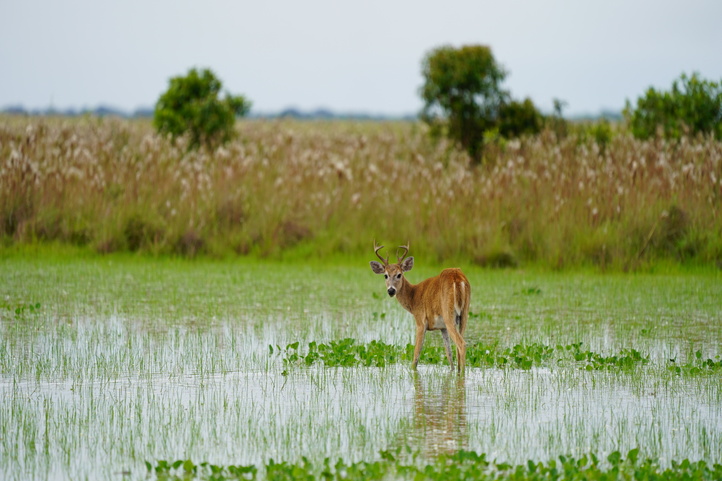
Highlighted Animals in the Orinoquía Region, Colombia
- Chigüiros
Habitat: Jungles and forests.
Conservation Status: minor concern.
Chigüiros are among the largest rodents in the world. They are a very calm and friendly species, responsible for spreading seeds and serving as one of the foods for caimans and crocodiles. Similarly, Chigüiro is a typical Colombian dish.
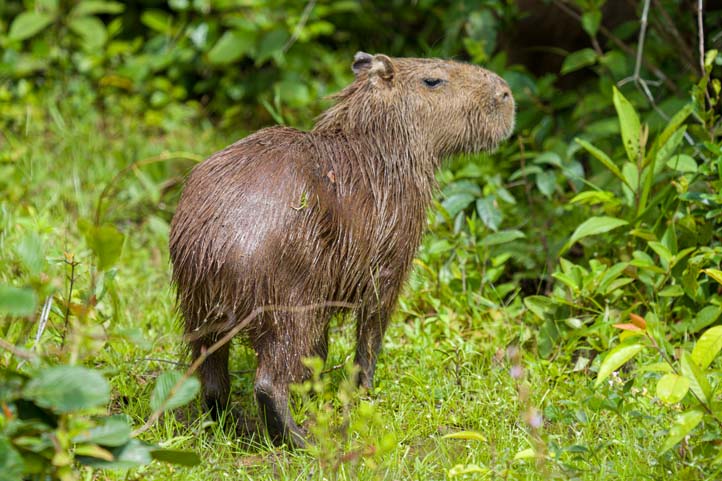
- White-tailed Deer
Habitat: Jungles, highlands, and forests.
Conservation Status: minor concern.
The white-tailed deer is a mammal that can measure up to 1.5 meters (4 feet) in length. They play a vital role in maintaining the balance of forest ecosystems by feeding on plants and serving as prey for carnivores such as caimans or crocodiles.
Dangerous Animals in the Orinoquía Region, Colombia
These are the species considered potentially dangerous in this region:
- Coral snakes: as previously described.
- Rattlesnakes: as previously described.
- Orinoco caimans: They are territorial and might pursue and bite you.
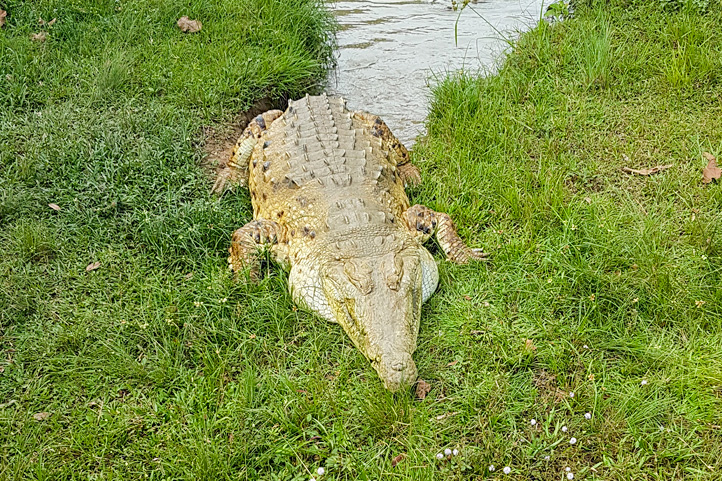
General Recommendations for Interacting with Animals in Natural Areas of Colombia
As you traverse Colombia’s mountains, jungles, and plains, you may encounter and observe various species of wildlife. However, it’s essential that when observing them or, if necessary, being near them, you do so safely and responsibly. Here are some general suggestions.
- Research and administer required vaccines for the area. For example, vaccines against yellow fever and chikungunya.
- Maintain distance from young animals.
- Do not feed or disturb animals.
- Avoid throwing objects at animals.
- Avoid purchasing wild species.
- Do not remove or introduce species.
- Stay within marked trails.
- Avoid making loud noises.
- Dispose of litter properly.
- Avoid using flash when taking photos.
- Do not pollute water sources.
- Do not bring pets.
- Report any observed sale and trafficking of species.
- Refrain from smoking.
- Use insect repellent.
- Keep belongings and clothes clean and dry.
- Be cautious with food; use sealed containers.
- Wear dark-colored or camouflage clothing.
- Carry a first aid kit.
- Avoid consuming alcohol or psychoactive substances.
What to Do If You Encounter a Potentially Dangerous Animal While Hiking in Colombia?
While hiking or even among your belongings, you may encounter potentially dangerous animals. It’s worth noting that this is not common in Colombia. However, being prepared is useful. These tips will help you handle such a situation.
- Notify the guide and your companions.
- Do not touch, approach, or take photos of the species.
- Stay calm, move slowly backward or sideways to clear the way until the animal moves away or passes.
- Most animals prefer to attack by surprise, so maintain eye contact.
- Do not run. Do not attack or kill the animal unless strictly necessary.
- If you believe a dangerous animal has bitten you, seek medical attention as soon as possible.
- You can carry with you devices or preventive elements that repel animals, such as ultrasound or sharp lights. Only use them in emergencies and not to disturb ecosystems.
More Nature Tourism Experiences in Colombia
Here is a list of incredible destinations for hiking and other natural activities in Colombia:
- Best 9 Hiking Regions and 27 Routes in Colombia For Travelers
- Colombian Flowers: The Top 11 Most Representative Species
- Cocoa Guide Colombia – Features & Producers
Where to see animals in Colombia?
- Where to see the Jaguar in Colombia
- Where to See Hummingbirds in Colombia
- Where to see Spectacled Bears in Colombia
- Where to see Sloth Bears in Colombia
- Where to see Chiguiros in Colombia
- Where to see the Golden Poison Frog in Colombia
- Where to see the Condor in Colombia
- Where to see Toucans in Colombia
- Where to see Butterflies in Colombia
- Where to see Whales in Colombia
- Where to see Pink Dolphins in Colombia
- Where to see Sharks in Colombia
- Where to see Monkeys in Colombia
- Where to see Snakes in Colombia


